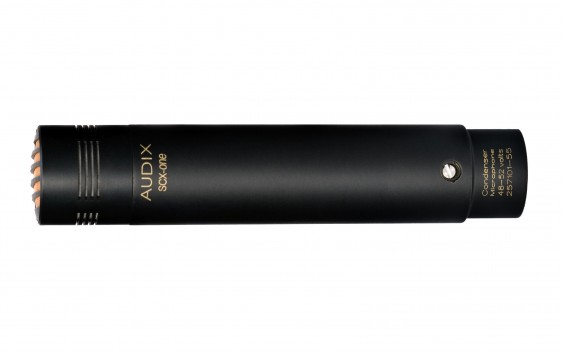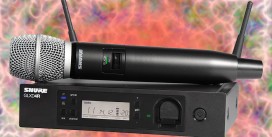Audix SCX1-HC is a professional hypercardioid SDC, mainly used for booming interviews and dialogues indoors. It can also be used for instruments when you want to achieve maximum isolation. Hypercardioid pattern makes it ideal for working in untreated rooms as it helps to minimize the impact of reflections. This mic has high sensitivity and requires some distance from the target. It has quite a narrow pickup, compared to other hypercardioids, and thus works best for miking one or two persons not too wide apart. Finally, the mic is very quiet and exhibits a relatively low handling noise as well.
Sound & quality
Audix SCX1-HC sounds slightly bright – it’s got some nice unobtrusive clarity and plenty of air. As you would expect from a quality SDC, it is very transparent and easily extends to 20 kHz without producing any noticeable distortions. The midrange is markedly clean and naturally represents the timbre of my voice. The acoustic guitar also sounds beautiful when you find the right sweet spot, which is not at all difficult. The bottom end is represented fully, without leaving anything out. And, it also exhibits a good sense of balance so the sound is neither thin nor too bassy.
The polar pattern of SCX1-HC is relatively narrow, which can be both a good and a bad thing, depending on the situation. The good thing is that having an excellent side rejection, it will minimize the echoes and other extraneous sounds coming from the environment. Especially when booming, noises coming from the camera crew or even the audience will be greatly reduced. The bad thing is that you will have to deal with a slightly more colored off axis response. When booming correctly, you will not hear any difference, but if boom operator is slacking, this could become a little bit more noticeable.
 In terms of rejection, it feels similar to short shotguns, except it just gives better indoor performance. I find it works best for miking just one or two persons. For larger groups of people you will need to use something with a wider range in order to achieve better results. You can still get away with SCX1-HC as you raise it higher, but this is not something that I would advise doing on a daily basis. In terms of noise, this mic shows an excellent performance. Self-noise figure is only 14 dB-A, which is good for this type of mic, especially for the price – better are only expensive Sennheisers.
In terms of rejection, it feels similar to short shotguns, except it just gives better indoor performance. I find it works best for miking just one or two persons. For larger groups of people you will need to use something with a wider range in order to achieve better results. You can still get away with SCX1-HC as you raise it higher, but this is not something that I would advise doing on a daily basis. In terms of noise, this mic shows an excellent performance. Self-noise figure is only 14 dB-A, which is good for this type of mic, especially for the price – better are only expensive Sennheisers.
Comparison
Many people compare this mic to Audio-Technica AT4053b, because the two are in the same price range. If SCX1-HC has a narrow pattern, AT4053b is the exact opposite – it is widest of all. Audio Technica can work for larger groups of people, but it has issues with handling noise, so I do not particularly recommend it. Unless you are planning to use it exclusively with mounted booms. Despite having a wider pickup, the sound quality is inferior to Audix. Self-noise figure is only average – 16 dB-A. Considering the price of Audio Technica mic, the performance is rather sub-par.
Sennheiser MKH 50 is another mic widely used by videographers. It has better specs and sounds richer and more natural than Audix SCX1-HC. The self-noise of this mic is very low – only 12 dB-A; plus it has a significantly higher sensitivity (25mV/Pa vs 17mV/Pa), which converts into 3 dB more signal. This effectively makes it less noisy by 5 dB, which is amazing. The pickup is not as narrow but still offers a good rejection. I find it somewhat easier to work with – it has a good range and it’s a bit more versatile for different situations. Some people even use it outdoors and achieve great results. However, MKH 50 is about twice more expensive than SCX1-HC.
Poor Man’s Schoeps
Audix SCX1-HC happens to be one of the most affordable hypercardioids designed specifically for indoor miking. Considering the price, it has a fantastic performance and closely matches the specs of Schoeps Colette MK41. Accordingly, it is dubbed as a poor man’s Schoeps. Colette’s performance is only slightly better, yet it is three times more expensive. Among the available models, Audix SCX1-HC is the only one built in the USA. This allows to cut down on customs and other charges associated with import, so it will cost you less than imported brands. Unless you can afford Sennheiser, it should be a no brainer.
- Reviewed at $499
Pros
|
Cons
|










This is well written and very informative. Thank you!